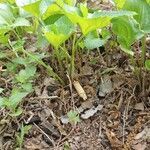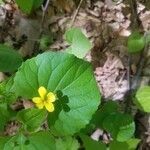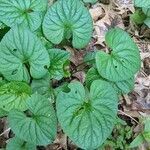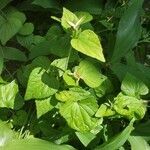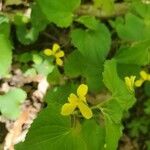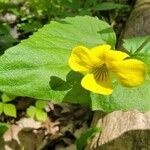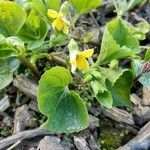Plants perennial, caulescent, not stoloniferous, 10–45 cm. Stems 1–3+, ascending to erect, leafless proximally, leafy distally, glabrous or puberulent, from subligneous rhizome. Leaves basal and cauline; basal: 0–4; stipules ovate to lanceolate, margins entire, coarsely toothed, or crenate, apex acute or obtuse; petiole 2.7–19.6 cm, lanceolate, margins ciliate or eciliate, auricles 0.1–0.5 mm; petals lemon-yellow on both surfaces, lower 3 brownish purple-veined, lateral 2 and sometimes others, bearded, lowest 8–18 mm, spur yellow to greenish, gibbous, 1–2.5 mm; style head bearded; cleistogamous flowers axillary. Capsules ellipsoid, 8–12(–20) mm, glabrous or tomentose. Seeds brown, 1.8–3 mm. 2n = 12.
